Last updated on May 4th, 2022 , 09:23 am
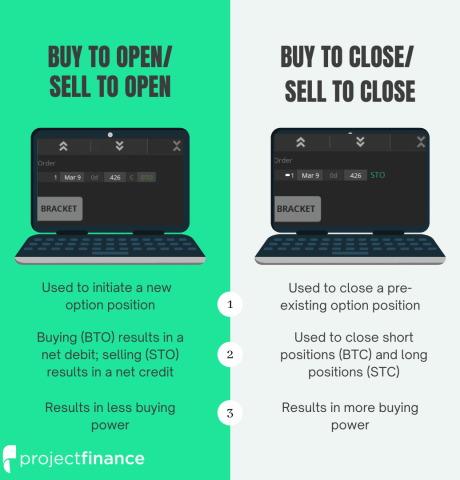
When placing an options trade, traders have one of four transaction “position types” on the order confirmation box to choose from:
- But to Open (BTO)
- Buy to Close (BTC)
- Sell to Open (STO)
- Sell to Close (STC)
On some trading platforms, this box will be pre-selected for you. Other trading platforms give traders the choice to choose whether or not the trade is closing or opening.
However, regardless of what you choose here, the order will default to the proper opening or closing transaction.
So why the choice? Sometimes, trades are filled and then allocated to different accounts. This option is mostly reserved for advisors who trade in bulk, and then allocate trades to the proper accounts.
But since all options traders see this choice, let’s go through every possible type of opening/closing transaction for derivatives.
Jump To
TAKEAWAYS
- All initiating long option trades are marked “Buy to Open” (BTO).
- All closing long option trades are marked “Sell to Close” (STC).
- All initiating short options trades are marked “Sell to Open” (STO).
- Closing short positions in options are marked “Buy to Close” (BTC).
- Spread trading can involve both Buy/Sell to Open as well as Buy/Sell to Close.
- Rolling options can involve using contrasting position effect designations (e.g., BTC and BTO).

New to options trading? Learn the essential concepts of options trading with our FREE 160+ page Options Trading for Beginners PDF.
Buy to Open (BTO): Long Call and Put Options
If a trader is going long a call or put option, that order should be designated as “Buy to Open”.
Buy to Open: Long Call Option
Call options are bullish trades that bet on a rise in the value of an ETF, index, or stock price. Long call options need the underlying asset to rise significantly in value to profit.
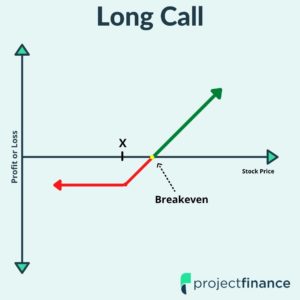
Traders establishing an opening trade in a long call option should tag that order “Buy to Open” (BTO).
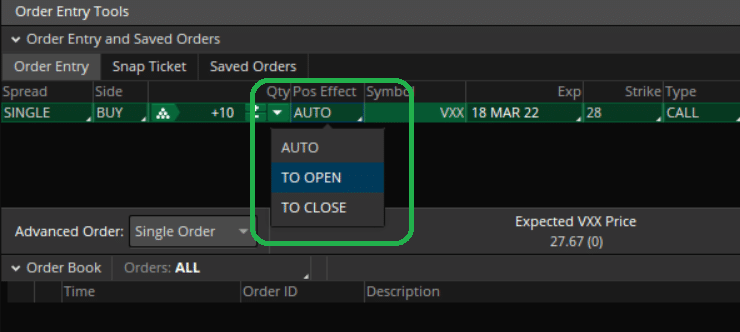
Buy to Open: Long Put Options
Put options are bearish trades that profit when the underlying asset decreases significantly in value.
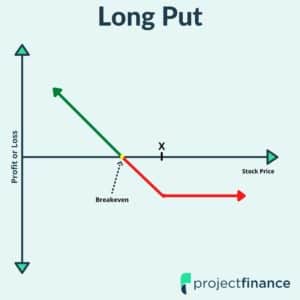
As with call options, all opening long put option positions should be tagged “Buy to Open” (BTO).
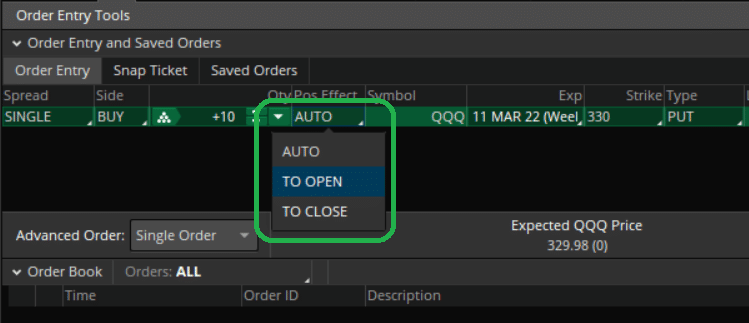
Sell to Open (STO): Short Call and Put Options
Just as with stock, options can be both bought and sold. A short option position has the exact opposite profit/loss profile as its long counterpart.
All initiating short option positions should be tagged “Sell to Open” (STO).
Sell to Open: Short Call Option
The short call option is a neutral to bearish options trading strategy with unlimited loss potential.
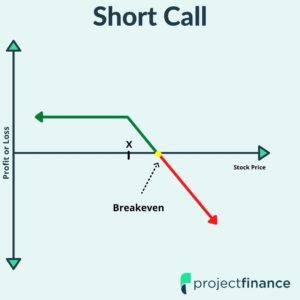
All initiating short call option positions need to be tagged “Sell to Open”. Regardless of whether you’re buying or selling, if a trade is initiating, that trade needs to be marked “opening”.
The below image shows how selling call options to open on Google should be setup.
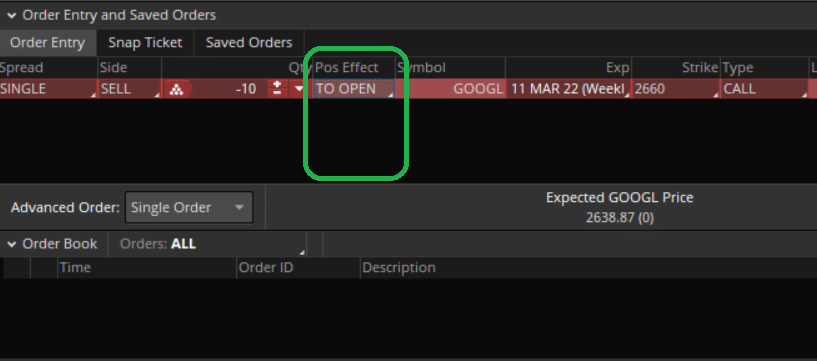
Sell to Open: Short Put Option
The short put option is a neutral to bullish options trading strategy with great loss potential.
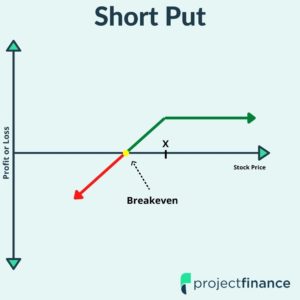
All traders initiating a short put option position need to tag their order “Sell to Open” (STO). The below images shows the order confirmation box for a short put position in Tesla (TSLA).
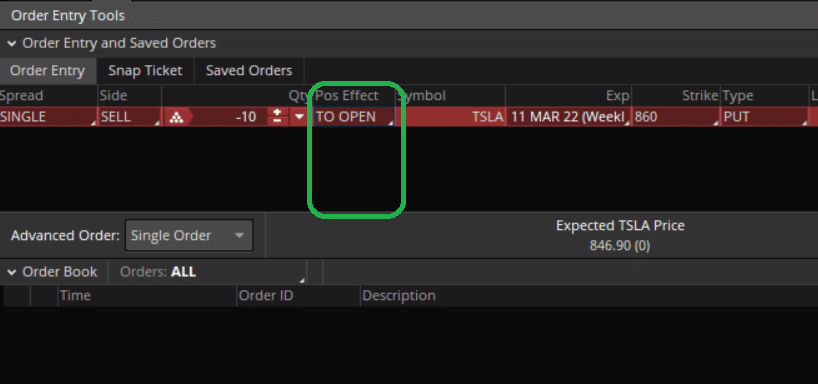
So far, we have covered the basic “position types” used for initiating option orders.
When closing option trades, the exact opposite (“To Close”) designation is used. Let’s look at a few examples next!
Sell to Close (STC): Exiting Long Options
Whenever trading out of a long option position, that order should be tagged “Sell to Close”. Let’s start off by looking at how closing a long call option should be setup.
Sell to Close: Exiting Long Call Option
When selling a long call option, you are conducting a “Sell to Close” (STC) transaction.
The below image shows how closing a pre-existing call option on GOOGL should appear on your order confirmation page:
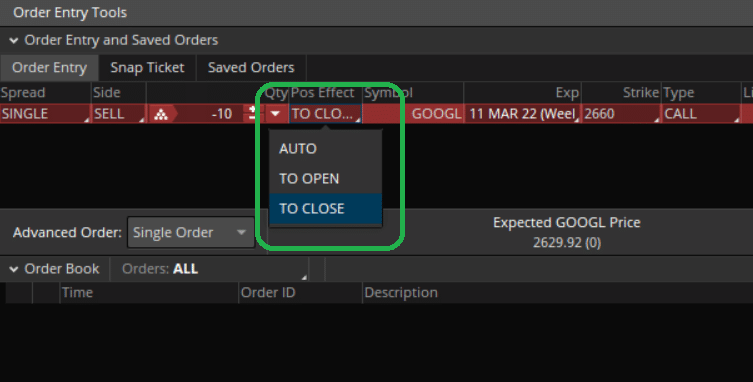
Sell to Close: Exiting Long Put Position
The same STC position effect is true of exiting long put options. The below image shows the proper setup for closing a long GME put option.
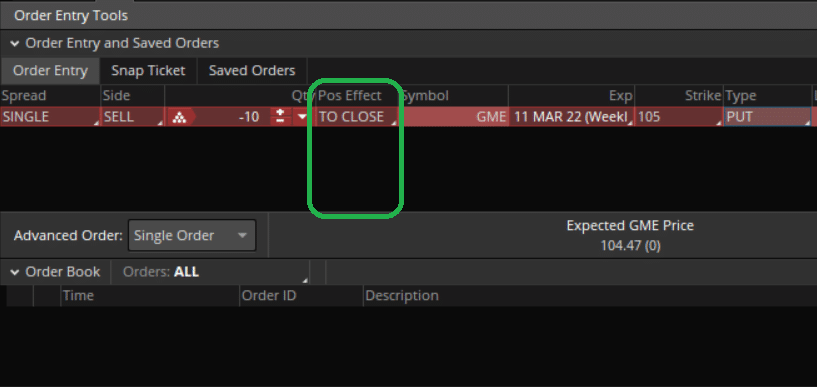
Buy to Close (BTC): Exiting Short Options
All short option positions are exited in a “buy to close” (BTC) transaction. Let’s take a look at the proper setup for exiting a short call in AAPL first:
Buy to Close: Exiting Short Call Option
If a trader were short the 167.5 strike price call on AAPL and wanted to close that option out before it expired, that trader would place a “buy to close” order. This order would look similar to the one below.
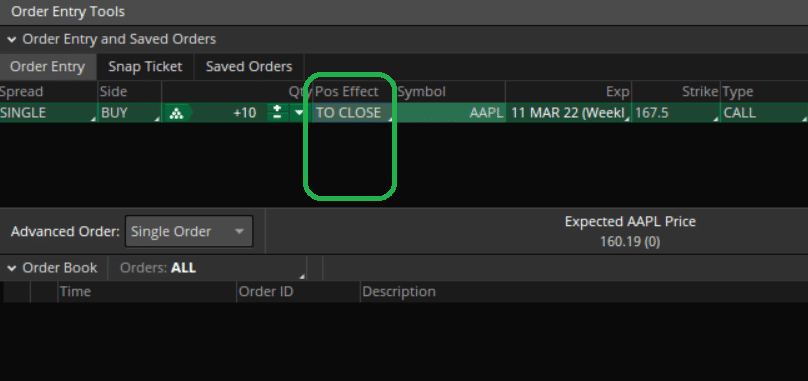
Buy to Close: Exiting Short Put Option
Exiting short put options would have the same setup as exiting long call options. All short options are marked “Buy to Close” when buying back.
The below image shows how closing a short 417 strike price put option in SPY expiring on March 18th should appear:
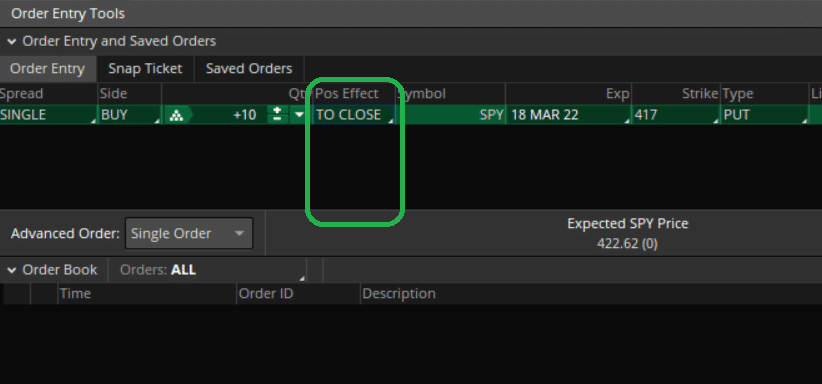
Buy to Open vs Sell to Open: Spreads
Spread trading can involve buying and selling different options in one transaction.
This may require you to mark different legs of the trade with different position effect designations.
Consider a vertical spread in AAPL that involves both buying and selling options:
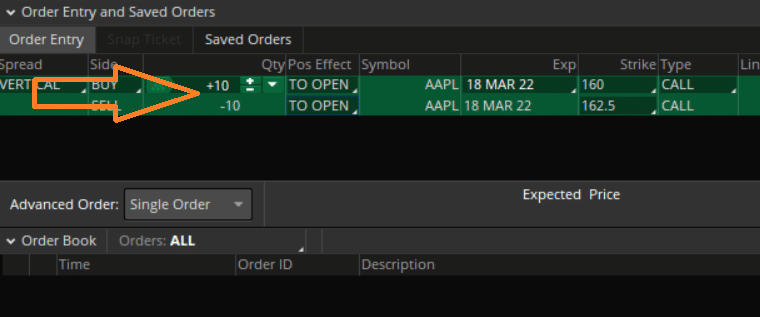
Since we are both buying and selling initiating options here, both legs should be marked “To Open”.
The same is true for the closing transaction: both sides must be marked “To Close”.
Rolling Trades
Sometimes, trades don’t go our way. When this happens, we may want to roll our call or put option out to a different expiration date. This is an alternative way to opening a new position.
Let’s say we are long a call option on NFLX. Time decay (or theta) has worked against us, and our long position has declined in value from the price we bought it for.
If we are still bullish on NFLX, we could roll that trade out to a different expiration. This would involve using both the “Buy to Close” and “Buy to Open” designation:
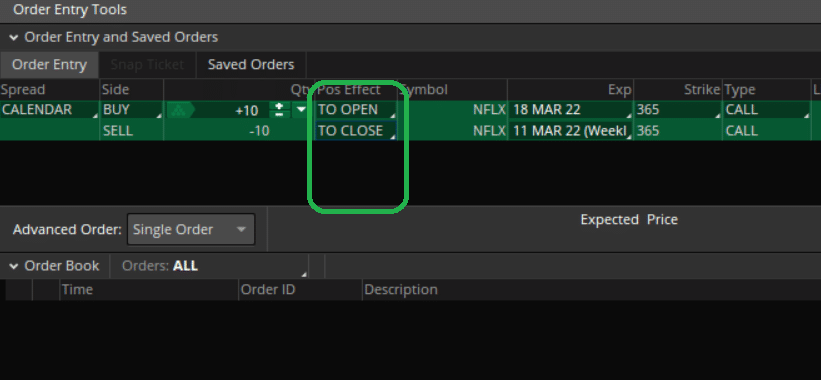
Order Confirmation: Other Information
In addition to the position effect, a few other vital designations must be set in the trade confirmation box before a trade is placed.
Time-in-Force (TIF) Designation:
Time in Force (TIF) tells your broker the time and duration you want your order working for. These can include:
- DAY (day order)
- GTC (good till canceled)
- EXT (Extended market)
Option Order Type:
In addition to TIF, an option order type must be selected. These include:
Final Word
Most trading platforms choose the position effect of your order for you. But even if you have to choose this on your own, chances are your broker will automatically change this to the correct buy/sell designation should you choose the wrong one.
On tastyworks, this work is already done for you. Just another reason why we use tastyworks as our preferred broker!

New to options trading? Learn the essential concepts of options trading with our FREE 160+ page Options Trading for Beginners PDF.
Position Effect FAQ
The “sell to open” designation should be used for initiating trades only. This can include selling a single option to open, or selling the short component of a vertical spread.
All initiating trades should be marked “To Open”. Long option positions are established by marking the order “Buy to Open”; short option positions are established by marking the order “Sell to Open”.
Buying to close a pre-existing short put position can be accomplished by either creating the opposite order of your initiating sell trade, or by finding the option you wish to buy back on the options chain.
The best time to sell to close a call or put option is when that option breaches your pre-established lower limit or upper bound. Having these prices in place before a trade is entered can help take emotion out of trading.


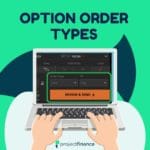

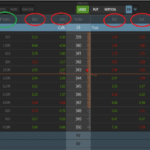


2 thoughts on “Options: Buy to Open vs Buy to Close & Sell to Open vs Sell to Close”
Thanks for the article!
So no matter how you mark your order, your broker will automatically send the trade the correct way? What’s the point of even having this buy to open/close option?
Thanks
Thanks for the question Mary!
And it is a good question indeed! It doesn’t make much sense for this option to even exist – I agree.
Many times, advisors fill trades in one trading account, then allocate it to different customer accounts. So for them, this option is vital. When I worked as an options broker, I would do this. It was important to mark the option correctly during certain periods of time, like when a stock was going “ex-dividend” and so on.
But from a retail perspective – it doesnt make sense to be able to choose between opening and closing – I agree!
Mike